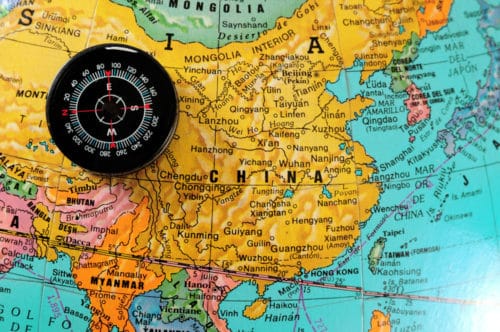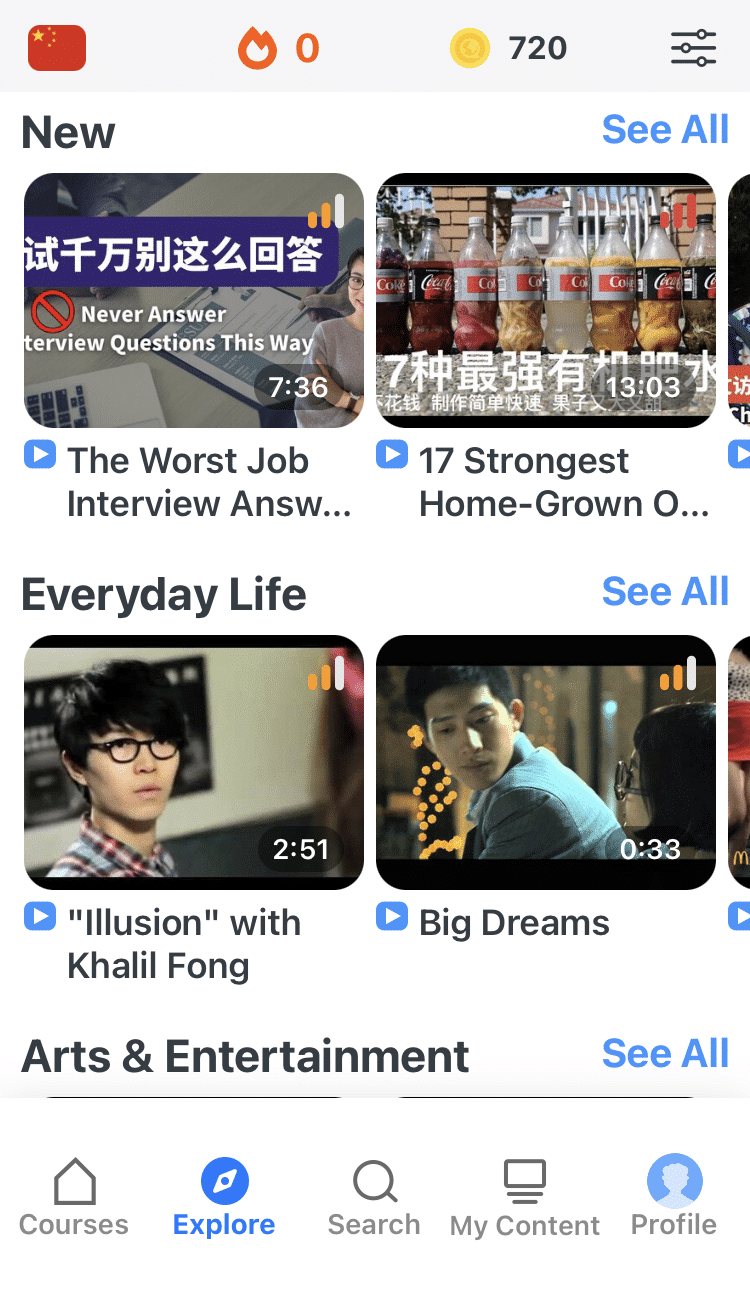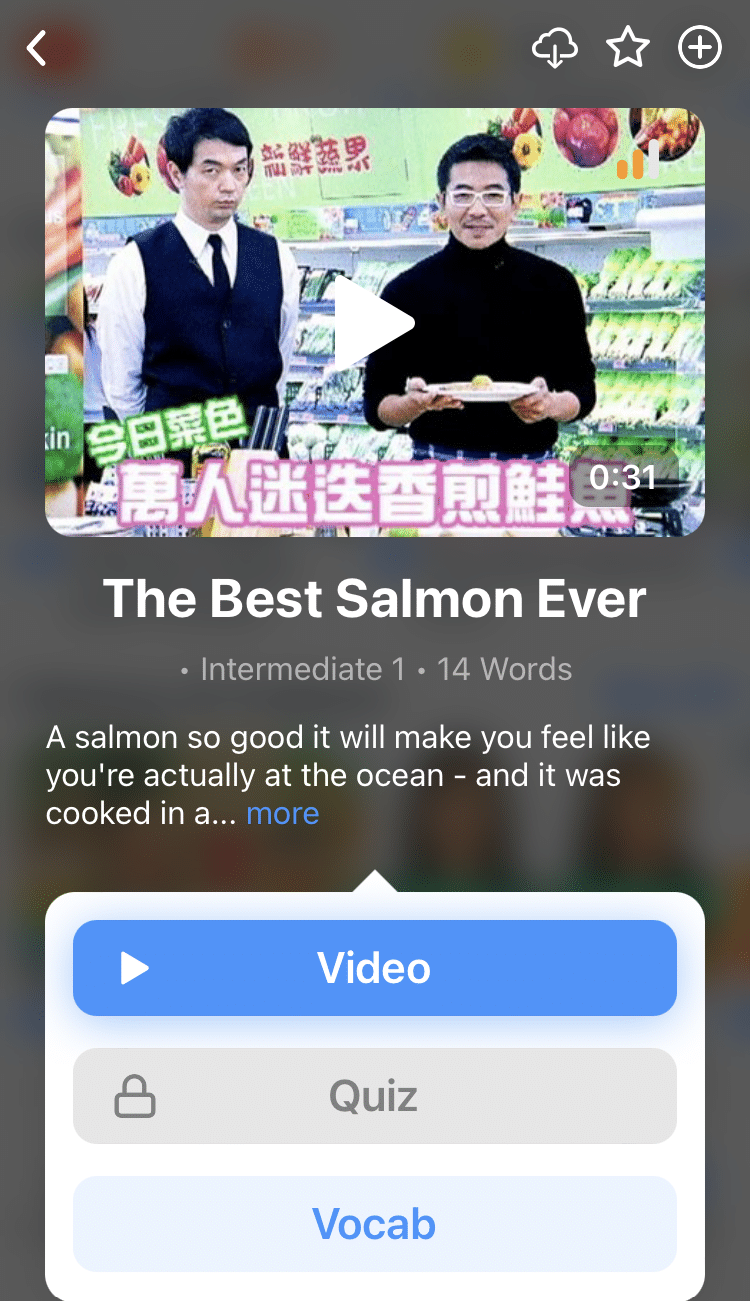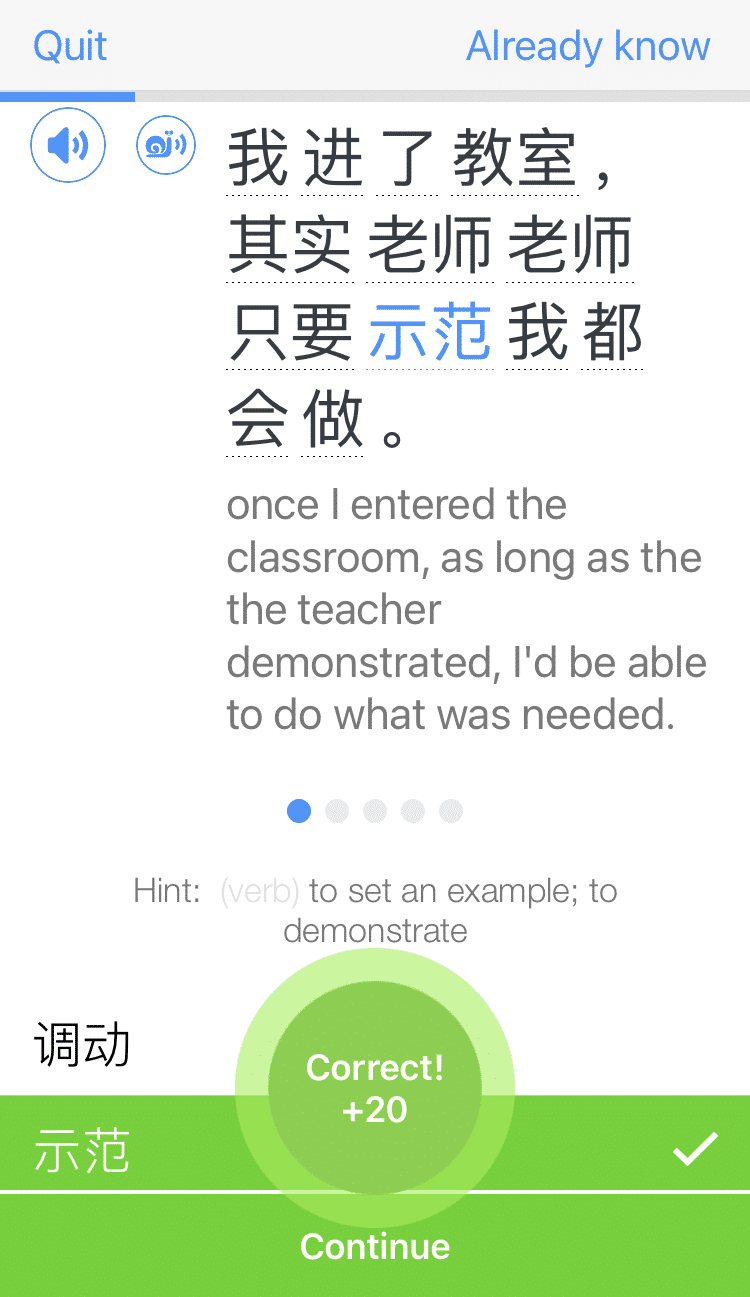
The 7 Major Chinese Dialects and How They Came to Be
China is a diverse nation—geographically, culturally and linguistically!
If you’ve ever traveled through China, you’ll soon realize, even if you speak Mandarin Chinese, you’ll still end up unable to understand someone.
That’s because the Chinese language has (at least) 7 major dialects, which can also be considered dialect groups.
Within these groups, there are estimated to be at least 300 Chinese dialects actively spoken in modern day China.
To get started, let’s jump into the major Chinese dialects! After the dialects, read on to learn about the history of this fascinating language.
Contents
- The 7 Major Chinese Dialect Groups
- How Many Chinese Dialects Are There?
- The History of Language in China
- And One More Thing...
Download: This blog post is available as a convenient and portable PDF that you can take anywhere. Click here to get a copy. (Download)
The 7 Major Chinese Dialect Groups
1. Mandarin Chinese
Where it’s spoken: China, Taiwan
Number of speakers: ∼1.1 billion
Mandarin, also known as Putonghua, is the official language of China. It’s spoken throughout the country and is taught and used in all schools. As a result, nearly every Chinese person can speak (or at least understand) Mandarin.
Some regions prefer their local dialect, however, in addition to Mandarin. They are sometimes stereotyped as speaking “bad” Mandarin, which of course is not true.
Mandarin began to be recognized as the language of the majority in the late Ming Dynasty, which lasted from 1368-1644. However, it didn’t become the official language of China until 1909.
Mandarin is also the official language of Taiwan.
Chinese uses tones to differentiate words. There are four tones (five if you count the neutral tone) in Mandarin Chinese.
Example words and phrases:
你好 (Nǐ hǎo) — Hello
你好吗? (Nǐ hǎo ma?) — How are you?
你吃饭了吗? (Nǐ chīfànle ma?) — Have you eaten yet?
2. Cantonese Chinese
Where it’s spoken: China’s Guangdong province, Guangzhou, Hong Kong, Macau
Number of speakers: ∼73 million
Though not quite second in terms of speakers, Cantonese is the second most widely spread dialect spoken in China. Today, it’s largely spoken by the Tanka people, who are natives of the Pearl River Delta.
The Cantonese Chinese dialect originated in ancient Guangzhou, also known as Canton City (hence, “Canton”ese!). It began with Middle Chinese and was then influenced by Proto-Tai. Then the language became Proto-Eastern Yue and finally was divided into the Guang Fu and Yong Xun dialects.
Because Cantonese is widely spoken, it’s a bit easier to find learning resources for it compared to other Chinese dialects. Cantonese Chinese uses six tones.
Example words and phrases:
你好 (Néih hóu) — Hello
你好吗?(Néih hóu ma?) — How are you?
再见 (Joigin) — Goodbye
3. Wu Chinese (Shanghainese)
Where it’s spoken: China’s Jiangsu and Zhejiang provinces, Shanghai
Number of speakers: ∼80 million
Used primarily in Shanghai, the Wu Chinese dialect is mostly known as Shanghainese. But while Shanghainese is one of the major Wu varieties, areas such as Suzhou, Wuxi, Changzhou, Hangzhou, Jinhua, Shaoxing and others have their own varieties.
The Wu Chinese dialect originated in the ancient Wu (吴) and Yue (越) kingdoms of China. These kingdoms were located in the modern-day Jiangsu and northern Zhejiang provinces. As a result, these provinces use a version of Wu Chinese called 吴越话 (wú yuè huà), which literally means “Wuyue speech.”
Wu is quite different from Mandarin, although they share similar grammatical patterns and use the same writing system. There are eight tones in Wu Chinese.
Example words and phrases:
侬好 (Nóng hō) — Hello
侬好伐? (Nóng hō va?) or 侬过得还好伐? (Nóng kûle e-hô va?) — How are you?
再喂 (Zai wēi) — Goodbye
4. Hakka Chinese
Where it’s spoken: China, Taiwan, Hong Kong, Macau
Number of speakers: ∼80 million
The Hakka Chinese dialect is spoken throughout Taiwan, Hong Kong, Macau and Southern China. It’s also a common language in the diaspora of overseas Chinese in Southeast Asia and around the world. Because it’s spoken so widely, Hakka can be further divided into even more dialects.
The history of Hakka Chinese is a bit unclear. Towards the end of the Western Jin period, multiple migrations took place as people moved to escape war and strife. Many think that Hakka originated during these migrations from Northern to Southern China.
Hakka has six tones and differs greatly from Mandarin and most other Chinese dialects.
Example words and phrases:
你好 (Ngi2 ho3) — Hello
你姓么个? (Ngi2 siang5 ma3ge5?) — What’s your name?
食昼没 (Siit8zu5mut8) — Good afternoon
5. Gan Chinese
Where it’s spoken: China’s Jiangxi, Hunan, Hubei, Anhui and Fujian provinces
Number of speakers: ∼60 million
Gan is most similar to Hakka in terms of pronunciation and phonetics. The two are sometimes grouped together as the Gan-Hakka languages.
The Gan Chinese dialect is native to the Jiangxi province. In 221 BC, during the Qin Dynasty, troops were sent to the Fujian and Guangdong territories. Many Han Chinese people migrated to the Jiangxi province as a result. The Gan dialect grew as the population of Jiangxi increased.
Unlike other dialects, the vocabulary of Gan Chinese is particularly ancient, and it contains many words that are rarely used in Mandarin today. It has six (or seven) tones.
Example words and phrases:
困觉 (Kùn gào) — To sleep
衣裳 (Yīshang) — Clothes
6. Hokkien Chinese
Where it’s spoken: Taiwan, Malaysia, Singapore, Indonesia, Philippines, China’s Fujian province
Number of speakers: ∼50 million
The Hokkien Chinese dialect is a common lingua franca (common language) in overseas Chinese communities. Because of this, it’s spoken in various countries throughout Southeast Asia.
Hokkien is also called Minnan, because it originated in the Minnan region of China’s Fujian province. Its widespread popularity is thanks to the Chinese diaspora, since many of the people who speak it come from Minnan ancestry.
The Hokkien Chinese dialect is noticeably similar to Hakka. Hokkien has eight tones and differs greatly from Mandarin.
Example words and phrases:
食饱未? (Chia̍h pá boeh?) — Hello (literally: Have you eaten yet?)
汝/你好无(吗)? (Lu/Li ho bo?) — How are you?
再会 (Zai-hueh) — Goodbye
7. Xiang Chinese
Where it’s spoken: China’s Hunan, Guangxi, Hubei and Guizhou provinces
Number of speakers: ∼36 million
The Xiang Chinese dialect, also called Hsiang and Hunanese, is spoken in various Chinese provinces, although it can be further divided into five subgroups: Chang-Yi, Lou-Shao, Hengzhou, Chen-Xu and Yong-Quan.
During the Ming Dynasty (1368-1644), a large group of people migrated to Hunan province. Xiang Chinese developed during this time. It shares many similarities with Mandarin and has been greatly influenced by it, as well as by the Gan Chinese dialect.
Of the seven entries on this list, Xiang Chinese is perhaps the most difficult to find resources for online, likely because it is not the dialect of any of China’s top five cities where language learners tend to congregate. Xiang uses five tones.
Example words and phrases:
你吃了吗? (Nǐ chīle ma?) — Have you eaten yet?
How Many Chinese Dialects Are There?
Linguists debate whether some Chinese dialects should be considered whole languages on their own. But for now, due to political reasons, China classifies them all as dialects, and there is at least some degree of mutual intelligibility between them.
According to K&J Translations, China is home to over 302 individual languages and dialects. In fact, the United Nations has declared April 20 “Chinese Language Day” because of the incredible linguistic diversity of Chinese.
For a quick overview of the various dialects, check out the video below which features 25 different Chinese dialects. You might notice that some of them sound almost identical.
The History of Language in China
The Chinese language has a rich and complex history dating back thousands of years. As a member of the Sino-Tibetan language family, modern Chinese emerged from Proto-Sino-Tibetan and then Old and Middle Chinese, which is the original source of all dialects spoken today.
The Chinese language is the oldest known written language on earth. The oldest evidence of written Chinese comes from the Oracle Bone Scripts, which are prophetic inscriptions etched into tortoise shells and ox bones during the Shang Dynasty (16th-11th century BC).
During the Qin and Han dynasties (221 BC to 220 CE), the written language was standardized with the creation of the first Chinese dictionary. This—and the invention of paper—allowed for the spread of Chinese language and culture around the country and the world.
In the 20th century, Chinese underwent more change, with the adoption of simplified characters in Mainland China. This allowed the language to become the one we know today—one of the six official languages of the United Nations and a tongue spoken by over a billion people worldwide.
Chinese is a dynamic language and is still changing today, with the increased use of text messaging and web applications. If you’re learning the language, it’s best to do so with authentic content, so you can see how it lives and breathes. On the FluentU program, for instance, you can see hundreds of videos featuring native Chinese speakers.
FluentU takes authentic videos—like music videos, movie trailers, news and inspiring talks—and turns them into personalized language learning lessons.
You can try FluentU for free for 2 weeks. Check out the website or download the iOS app or Android app.
P.S. Click here to take advantage of our current sale! (Expires at the end of this month.)
If you visit China, don’t just lump together the local speech—consider the fact that you may be hearing two or more dialects even within the space of one market.
Download: This blog post is available as a convenient and portable PDF that you can take anywhere. Click here to get a copy. (Download)
And One More Thing...
If you want to continue learning Chinese with interactive and authentic Chinese content, then you'll love FluentU.
FluentU naturally eases you into learning Chinese language. Native Chinese content comes within reach, and you'll learn Chinese as it's spoken in real life.
FluentU has a wide range of contemporary videos—like dramas, TV shows, commercials and music videos.
FluentU brings these native Chinese videos within reach via interactive captions. You can tap on any word to instantly look it up. All words have carefully written definitions and examples that will help you understand how a word is used. Tap to add words you'd like to review to a vocab list.
FluentU's Learn Mode turns every video into a language learning lesson. You can always swipe left or right to see more examples for the word you're learning.
The best part is that FluentU always keeps track of your vocabulary. It customizes quizzes to focus on areas that need attention and reminds you when it’s time to review what you’ve learned. You have a 100% personalized experience.
Start using the FluentU website on your computer or tablet or, better yet, download the FluentU app from the iTunes or Google Play store. Click here to take advantage of our current sale! (Expires at the end of this month.)






